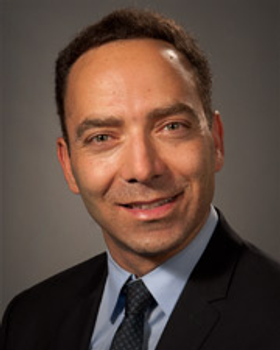Moyamoya Disease Overview
Learn About Moyamoya Disease
Moyamoya disease is a disorder of blood vessels in the brain, specifically the internal carotid arteries and the arteries that branch from them. These vessels, which provide oxygen-rich blood to the brain, narrow over time. Narrowing of these vessels reduces blood flow in the brain. In an attempt to compensate, new networks of small, fragile blood vessels form. These networks, visualized by a particular test called an angiogram, resemble puffs of smoke, which is how the condition got its name: "moyamoya" is an expression meaning "something hazy like a puff of smoke" in Japanese.
The genetics of moyamoya disease are not well understood. Research suggests that the condition can be passed through families, and changes in one gene, RNF213, have been associated with the condition. Other genes that have not been identified may be involved in moyamoya disease. It is also likely that other factors (such as infection or inflammation) in combination with genetic factors play a role in the condition's development.
Moyamoya disease was first identified in Japan, where it is most prevalent, affecting about 5 in 100,000 individuals. The condition is also relatively common in other Asian populations. It is ten times less common in Europe. In the United States, Asian Americans are four times more commonly affected than whites. For unknown reasons, moyamoya disease occurs twice as often in females as in males.
Up to 15 percent of Japanese people with moyamoya disease have one or more family members with the condition, indicating that the condition can be passed through generations in families; however, the inheritance pattern is unknown. Research suggests that the condition follows an autosomal dominant pattern, which means one copy of the altered gene in each cell is sufficient to cause the disorder. However, some people who have a copy of the altered gene never develop the condition, which is a situation known as reduced penetrance.
Northwell Health Neurosurgery & Spine
"Amir Dehdashti, MD, FACS, is a renowned neurosurgeon, and one of the few dual-trained cerebrovascular and skull base surgeons in America. He serves as the director of cerebrovascular neurosurgery research at North Shore University Hospital, and Professor of Neurosurgery at the Zucker School of Medicine at Hofstra/Northwell.Dr. Dehdashti's areas of expertise include cerebrovascular surgery for brain aneurysms and arteriovenous malformations, brainstem cavernous malformations, carotid artery disease, and bypass surgery for moyamoya disease and brain aneurysms. He specializes in skull base surgery for acoustic neuromas and meningiomas, minimally invasive endoscopic skull base surgery for pituitary and other skull base tumors, cranial nerve surgery for trigeminal neuralgia and hemifacial spasm, and craniovertebral junction surgery including Chiari. He has developed minimally invasive approaches to many complex cerebrovascular and cranial base diseases, and is one of a few neurosurgeons in the country with internationally recognized expertise in bypass surgery. With 14 years in practice as a board-certified neurosurgeon, Dr. Dehdashti understands the intricacies and delicate nature of brain surgery, and approaches each unique case with meticulous attention to detail. He is dedicated to providing the latest, most effective surgical options that offer the best possible outcomes, which is why patients both nationally and internationally are often referred to him. A global leader in neurosurgical research, Dr. Dehdashti has been published in more than 170 medical papers, including the textbook ""Surgery of Craniovertebral Junction. Dr. Dehdashti is rated as an Elite provider by MediFind in the treatment of Moyamoya Disease. His top areas of expertise are Moyamoya Disease, Pituitary Tumor, Cerebral Arteriovenous Malformation, Cerebral Artery Bypass Surgery, and Extracranial-Intracranial Bypass Surgery.
Stanford Health Care
Gary Steinberg is a Neurosurgery provider in Stanford, California. Dr. Steinberg is rated as an Elite provider by MediFind in the treatment of Moyamoya Disease. His top areas of expertise are Moyamoya Disease, Arteriovenous Malformation, Stroke, Extracranial-Intracranial Bypass Surgery, and Cerebral Artery Bypass Surgery.
Haruto Uchino practices in Japan. Mr. Uchino is rated as an Elite expert by MediFind in the treatment of Moyamoya Disease. His top areas of expertise are Moyamoya Disease, Stroke, Transient Ischemic Attack (TIA), Carotid Artery Surgery, and Extracranial-Intracranial Bypass Surgery.
Summary: Moyamoya disease is a cerebrovascular disease clinically characterized by chronic progressive stenosis or occlusion at the ends of bilateral internal carotid arteries and the origin of anterior cerebral arteries and middle cerebral arteries, followed by the formation of abnormal vascular networks at the base of the skull. Clinically, patients with Moyamoya disease mainly present with ischemic or h...
Summary: The purpose of this study is to create a state-wide biorepository and resource center for cerebrovascular diseases in Florida, which will include collecting medical history information and blood from subjects affected by cerebrovascular disease. The information and blood samples collected may be used in future research for the study of cerebrovascular disease and to learn about, prevent or treat o...
Published Date: October 01, 2017
Published By: National Institutes of Health
